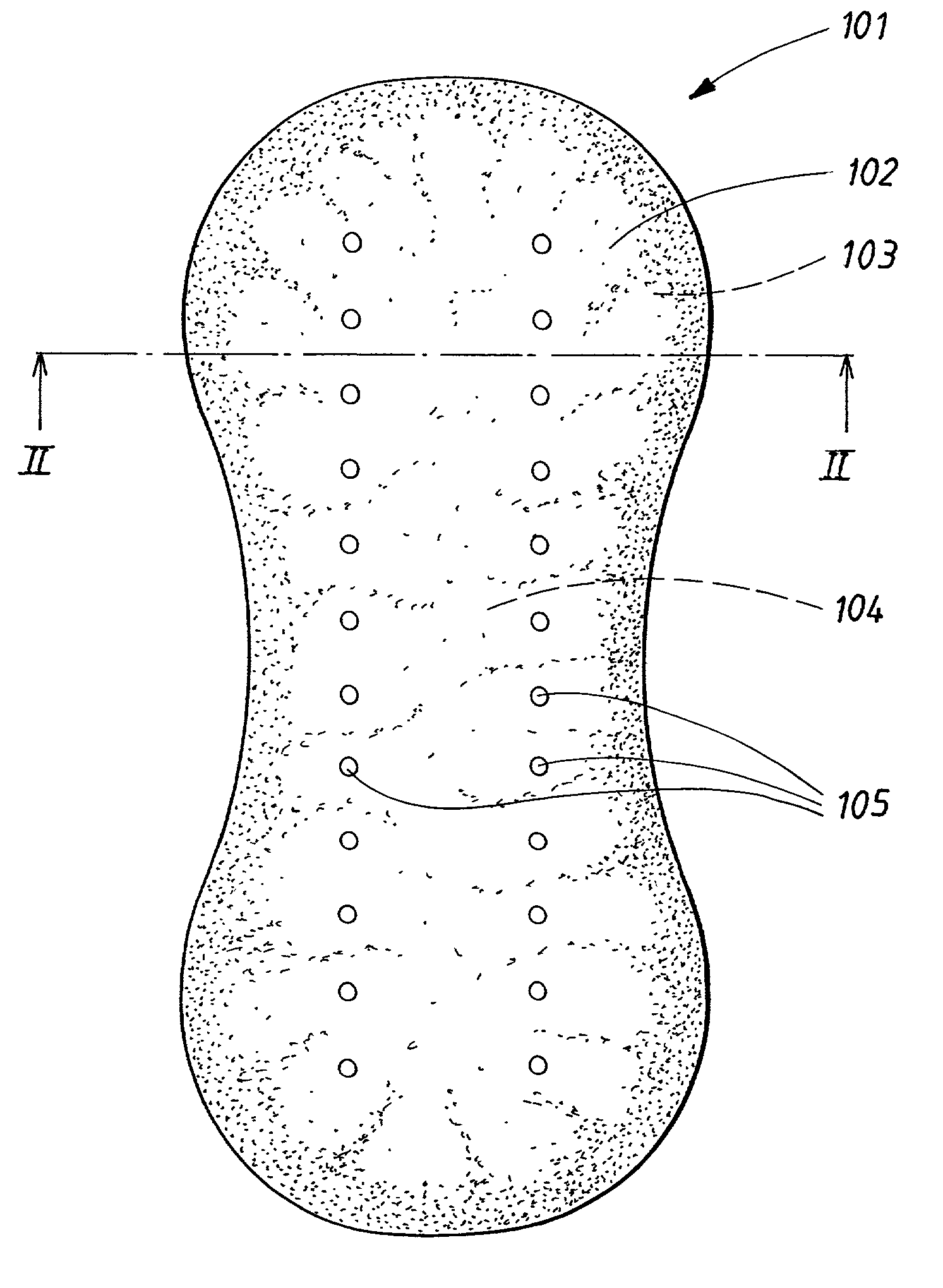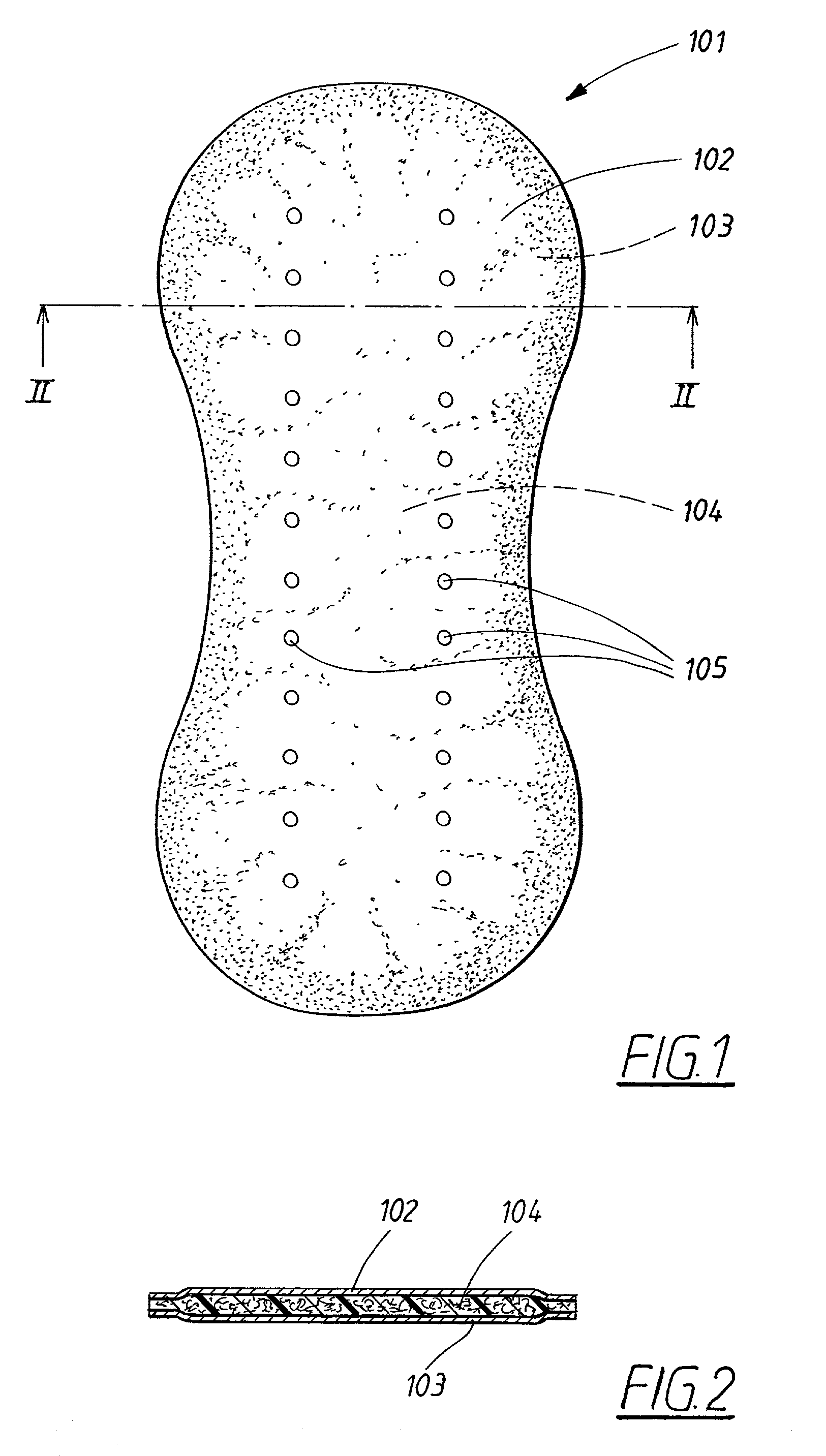Absorbent article
- Summary
- Abstract
- Description
- Claims
- Application Information
AI Technical Summary
Benefits of technology
Problems solved by technology
Method used
Image
Examples
example 1
[0042] In order to create a hydrophilic wettable surface on the fluid-pervious surface layer 102 of the sanitary napkin 101 an impregnation was applied on the fluid-pervious surface layer 102, on that side which will face the user in an in-use position of the sanitary napkin 101. The impregnation was applied by evenly distributing droplets of the impregnation on the fluid-pervious surface layer 102. The size of the droplets was in the range from 10 to 20 .mu.l. The droplets were then evenly spread out on the fluid-pervious surface layer 102 by means of a spatula. The means of spreading of the droplets is not critical. Hence, other ways of spreading the droplets can be used, such as a rubber roll, or the like.
[0043] Droplets of sheep blood 105 were then applied on the impregnated fluid-pervious surface layer 102 as shown in FIG. 1. The absorption rate was then measured. Here, the absorption rate is defined as the number of blood droplets 105 absorbed on the sanitary napkin 101, i.e. ...
example 2
[0051] In another embodiment of the invention the fluid-pervious surface layer 102 was impregnated with a mixture containing glycerol and lactic acid. The procedure described in Example 1 for application of the impregnation was repeated for the fluid-pervious surface layer 102 in this Example 2. A similar absorption rate as obtained for the glycerol-impregnated fluid-pervious surface layer 102 in Example 1 was obtained for the glycerol-lactic acid impregnated fluid-pervious surface layer 102. Hence, the lactic acid did not affect the absorbency-rate negatively. However, the lactic acid does offer a good pH control in the urogenital region. A good pH control will counteract bad smells and irritation of the skin or mucous membrane.
[0052] In the examples above the impregnation was applied evenly on the absorbent napkin. Of course, it is possible to apply the impregnation only on a portion or portions of the fluid-pervious surface layer of the sanitary napkin, for instance in the wettin...
PUM
 Login to View More
Login to View More Abstract
Description
Claims
Application Information
 Login to View More
Login to View More - R&D
- Intellectual Property
- Life Sciences
- Materials
- Tech Scout
- Unparalleled Data Quality
- Higher Quality Content
- 60% Fewer Hallucinations
Browse by: Latest US Patents, China's latest patents, Technical Efficacy Thesaurus, Application Domain, Technology Topic, Popular Technical Reports.
© 2025 PatSnap. All rights reserved.Legal|Privacy policy|Modern Slavery Act Transparency Statement|Sitemap|About US| Contact US: help@patsnap.com


